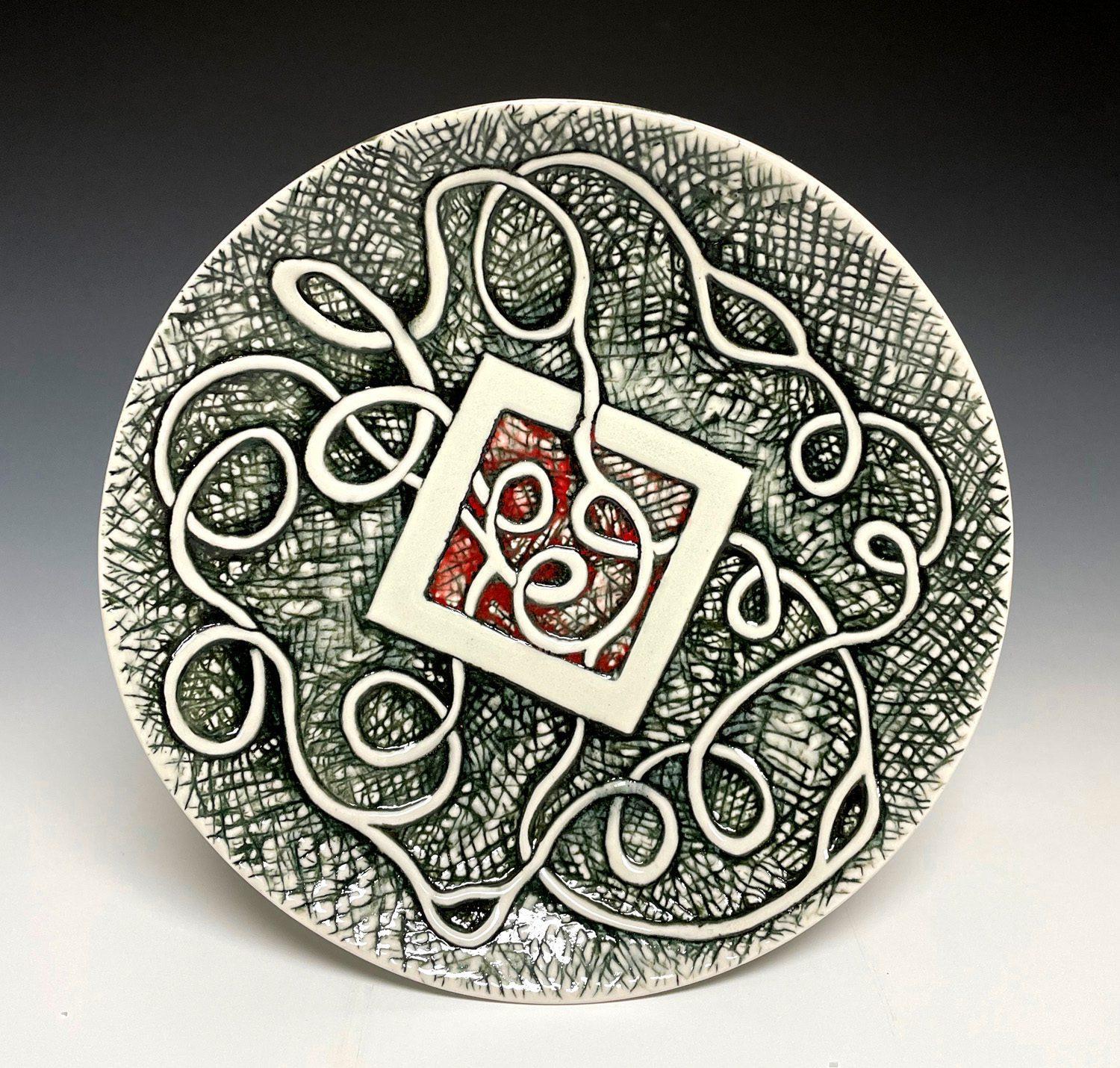REGENHARDT GALLERY AT SHRODE ART CENTER
Provocative Contradictions: Ceramic Art by Harris Deller
January 14 – February 11, 2024
- Exhibit Open: Tuesday – Saturday 10:00 am to 5:00 pm & Sunday 1:00 to 5:00 pm
- Gallery Admission – Free
GATHER AT THE GALLERIES – EXHIBIT OPENING RECEPTION
Saturday, January 13 | 5:00 to 7:00 pm
Admission $10.00 | Cedarhurst Members – Free
• Open bar and appetizers | 5 to 6 pm
• Gallery hop to see the art and meet the artists | 5 to 7 pm
• Shuttle rides to Shrode Art Center | 6 to 7 pm
Art Chat
Sunday, February 4 | 1:30 to 2:30 pm
Regenhardt Gallery at Shrode Art Center
Coffee & Chocolate refreshments
Artist Statement
What we know next will change what happens next, and we can’t know what we’ll know next, since if we could we’d know it now.
– Karl Popper, philosopher
Ceramic history and tradition, especially pottery, is the foundation of my making. Because pottery is abstract it best suits my purposes. I am interested in human contradictions, duality, paradox, juxtaposition, yin and yang. Using shapes, forms, colors and textures, I am drawn to abstraction as a way to uncover and make visual feelings and emotions. My visual vocabulary consists of line, rectangles, triangles and trapezoids. I draw inspiration from the basic elements of air, water and fire. I also have a strong affinity for proportion and balance, black and white, basic color and pattern.
Pottery is familiar to us. We have a long association and understanding with some of the properties that are particular to pottery. The relationship of the inside to the outside, the top to the bottom, form and function, these are accessible to most viewers. Pottery can exist as a sculptural form, while at the same time they hold on to or reference of function. Pottery can also be made for daily use employing tactile qualities and beauty, offering joy and pleasure to both the eye and the hand.
The complexities and abstractness of pottery forms like the teapot and vase inspire me. They are constructed from several shapes to make the final form. I also find inspiration in the plate, the flat concave surface allowing me to approach it in ways similar to how a painter approaches a blank canvas. In addition, the surface of clay can be scratched and incised as well as glazed. Glaze is subjected to heat and influenced by the fire of the kiln. Unlike paint, glaze is transformed; it melts and is affected by gravity. Glaze is viscous and can be transparent or opaque. Glaze flows, surrounding and pooling into textures, fissures and patterns on the surface of the clay. It can be filled with crystals or streaked like an animal’s fur. Glaze imparts it’s own inherent abstract qualities to the work.
Pottery necessitates volume for use and that carries with it certain expectations and content such as a volume is “full” or “pregnant” with meaning. Through my work I re-examine the role volume plays in pottery. For example, I make cups and teapots where the handle penetrates the volume. I also make cups and teapot – like forms where the volume is “suppressed.” Literally by squeezing the sides of the pot towards each other the air from the volume is removed and the form is altered. The nature of the pot is changed and two convex planes meet at an edge to define the volume. The pot now has 2 sides and alludes to being 2 dimensional and the emphasis is placed on the forms profile and contour.
The illusion of 2 dimensions is enhanced through “mark making” on the planes. Incising and crosshatching into the clay’s surface lends to it the sprit of a drawing. I work with a very coarse white porcelain clay body and inlay the marks with a black glaze that accentuates the whiteness of the porcelain and the graphic quality of the work.
My practice finds inspiration from the “mallet shaped” vases of the Sung and Ming Dynasties, Pre-Columbian pots and Cycladic figures. I admire the vitality and soul of the sculptural forms of Hans Coper and the constructed “Stacked Pots” of Peter Voulkos. My surfaces are inspired by native American Pottery,the potter Lucy Rie, and painters Agnes Martin and Bridget Riley
Instead of working from a single piece of clay on the potter’s wheel, my work is constructed from several shapes. I alter cones and cylinders into trapezoid like shapes that I stack and join together. I will construct a form by combining at least 2 or more of these shapes. The technique lends itself to suppressing or altering the volume and the final forms put greater emphasis on the contours and planes of the pieces. In some work I will make each side distinct as in “there are two sides to every story.” At other times one side will mimic the other. Recently, inspired by the stainless steel sculpture from David Smith’s “Cubi Series,” I have become interested in stacking and building pottery from hollow geometric forms. Now instead of the work having 2 sides, it has 4.
I approach working from a phenomenological point of view, relying on the repetition and systems associated with pottery making along with permutations and combinations of form and surface. Making pattern from concentric arcs as a record of my involvement, time and emotion or serving as a recording of my heartbeat. Sometimes the pattern is reference to a fingerprint.
Paying careful attention to any changes in the space between the lines, or deviations in glaze, I look for anomalies and try to build upon those in subsequent works. It is important that my shapes have a precise contour, sometimes with an anthropomorphic stance. I use pattern to activate, mark time and record human activity. I use glaze to imply movement, passion and both are used to imply water and wind. My desire is to make vessels that are alluring, elicit a reaction and perhaps present a paradox.
-Harris Deller

GALLERY SPONSORS:

EXHIBIT SPONSORS:
Josh and Hillary Esser
Artist Biography
Harris Deller was born in Brooklyn, New York. He received a B.A. in Art from California State University at Northridge and his MFA from Cranbrook Academy of Art. Deller’s work has been featured in more than 125 group and solo exhibitions throughout the United States, Asia and Europe. His work is represented in over 25 collections including: The Metropolitan Museum of Art, NYC, The American Museum of Ceramic Arts; The New Mexico Museum of Art; The Crocker Museum, Sacramento; The Cranbrook Museum; University of Iowa; the Long Beach Museum; the Everson Museum; the Museum of Art and Design, NY; Utah State University; Shigaraki Museum; the San Francisco Museum of Art; Illinois State Museum; the Racine Art Museum; Hallmark Corporation; Yixing Ceramic Museum; Indiana State University; Arizona State University; the Mitchell Museum and Philip Morris, N.Y.
He has been awarded 6 Artist Fellowships from the Illinois Arts Council; a Gold Medals at the 47th Concorso Internationale della Ceramica d’Arte, Fienza, and the 2nd International Ceramics Competition, Mino, Japan. Deller received an Arts Midwest Fellowship and in 1981 a Fulbright Fellowship. He served on the Board of Directors of National Council for Education in the Ceramic Arts (NCECA) from 1985-1993. He became a “Fellow” to NCECA in 1994 and in 2008 he received the NCECA’s“Excellence in Teaching Award.” He has been a Visiting Professor at the School of the Art Institute of Chicago and Hong Ik University in Seoul, South Korea. In 2011, Deller was elected to the International Academy of Ceramics (IAC).His works have been reviewed, pictured or cited in over 45 publications; featured in Ceramics Monthly (2008, January), and Ceramic Art and Perception, (2006) and featured on the cover of Ceramic Art and Perception, (2012). In 2012, Deller became a Professor Emeritus in the School of Art and Design at Southern Illinois University Carbondale where he taught for over 35 years and served as the Director of the School of Art and Design 1999-2008. He currently owns and operates “White Roof Studio” in Carbondale, IL
From February 23 – August 29, 2021 Deller had work included in “Shapes From Out of Nowhere” an exhibition at the Metropolitan Museum of Art in New York. His work was mentioned in the July, 2021 edition of New Ceramics, “The Robert Ellison Ceramics Collection at the Metropolitan Museum of Art.” Most recently, he has work included at The Nora Echols Harrison Museum, Logan Utah; Art space 304, Carbondale, IL; The Charlie Cummings Gallery, Gainesville, FL.; and McLean County Art Center in Bloomington, IL.





